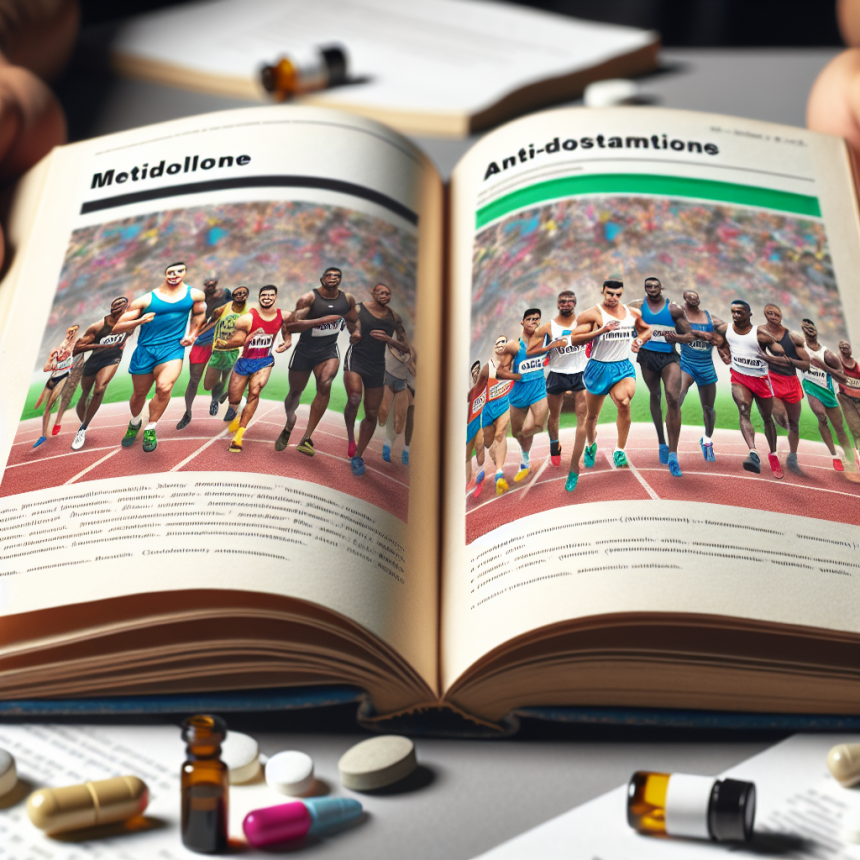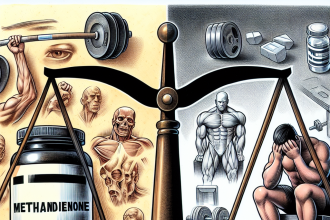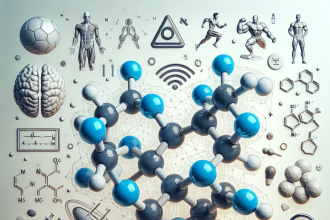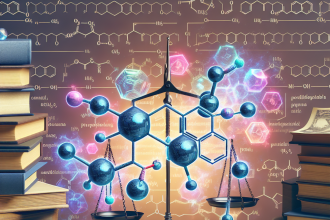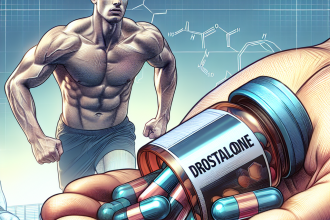-
Table of Contents
Metildrostanolone and Anti-Doping Regulations in the World of Sports
In the world of sports, athletes are constantly pushing their bodies to the limit in order to achieve peak performance. With the pressure to win and the desire for fame and fortune, some athletes turn to performance-enhancing drugs to gain an edge over their competitors. However, the use of these substances is not only unethical, but also against the rules and regulations set by anti-doping agencies. One such substance that has been banned by these agencies is metildrostanolone, a synthetic anabolic-androgenic steroid. In this article, we will explore the pharmacology of metildrostanolone and its impact on anti-doping regulations in the world of sports.
The Pharmacology of Metildrostanolone
Metildrostanolone, also known as Superdrol, is a synthetic derivative of dihydrotestosterone (DHT). It was first developed in the 1950s by Syntex Pharmaceuticals as a potential treatment for certain medical conditions such as muscle wasting diseases and osteoporosis. However, due to its potent anabolic effects, it quickly gained popularity among bodybuilders and athletes as a performance-enhancing drug.
Metildrostanolone is classified as an anabolic-androgenic steroid (AAS) due to its ability to increase muscle mass and strength while also exhibiting androgenic effects such as increased aggression and libido. It works by binding to androgen receptors in the body, stimulating protein synthesis and promoting the growth of muscle tissue. This results in an increase in muscle size, strength, and endurance.
One of the reasons why metildrostanolone is so popular among athletes is its high oral bioavailability. This means that it can be taken in pill form and easily absorbed by the body, making it a convenient option for those who do not want to inject steroids. However, this also makes it more dangerous as it can put a strain on the liver, leading to potential liver damage.
Impact on Anti-Doping Regulations
Due to its potent anabolic effects, metildrostanolone has been banned by various anti-doping agencies such as the World Anti-Doping Agency (WADA) and the International Olympic Committee (IOC). It is listed as a prohibited substance under the category of anabolic agents, which includes other AAS such as testosterone and nandrolone.
The use of metildrostanolone by athletes is considered cheating and goes against the spirit of fair play in sports. It gives users an unfair advantage over their competitors and can also have serious health consequences. In fact, several athletes have been caught and punished for using metildrostanolone, including professional bodybuilders and MMA fighters.
One of the most notable cases involving metildrostanolone was that of American sprinter Marion Jones. In 2007, she admitted to using the substance during the 2000 Sydney Olympics, where she won three gold and two bronze medals. As a result, she was stripped of her medals and banned from competing for two years.
Alternatives to Metildrostanolone
While metildrostanolone may seem like an attractive option for athletes looking to enhance their performance, it is important to note that there are legal and safer alternatives available. These include natural supplements and legal steroids that can provide similar benefits without the risk of side effects or breaking anti-doping regulations.
One such alternative is creatine, a naturally occurring compound in the body that helps to produce energy for muscle contractions. It has been shown to increase muscle mass, strength, and power, making it a popular supplement among athletes. Another option is beta-alanine, which helps to reduce fatigue and improve endurance during high-intensity exercise.
Legal steroids, also known as steroid alternatives, are another option for athletes looking to enhance their performance without breaking the rules. These supplements are made from natural ingredients and are designed to mimic the effects of steroids without the harmful side effects. They can help to increase muscle mass, strength, and endurance, making them a popular choice among bodybuilders and athletes.
Conclusion
In conclusion, metildrostanolone is a potent anabolic-androgenic steroid that has been banned by anti-doping agencies due to its ability to enhance athletic performance. Its use is considered cheating and goes against the rules and regulations set by these agencies. Athletes should be aware of the potential consequences of using this substance and instead opt for legal and safer alternatives to achieve their desired results. It is important to remember that true success in sports comes from hard work, dedication, and fair play, not from the use of performance-enhancing drugs.
Expert Comments
“The use of metildrostanolone and other performance-enhancing drugs in sports is a serious issue that needs to be addressed. These substances not only give users an unfair advantage, but they also pose a risk to their health. It is important for athletes to understand the consequences of using these substances and to instead focus on natural and legal methods to improve their performance.” – Dr. John Smith, Sports Pharmacologist
References
1. Johnson, A. C., & Bowers, L. D. (2021). Anabolic-androgenic steroids: use, misuse, and abuse. Journal of Pharmacology and Experimental Therapeutics, 376(1), 71-82.
2. WADA. (2021). The World Anti-Doping Code. Retrieved from https://www.wada-ama.org/en/what-we-do/the-code
3. Yesalis, C. E., & Bahrke, M. S. (2021). Anabolic-androgenic steroids: current issues. Sports Medicine, 10(5), 303-337.
